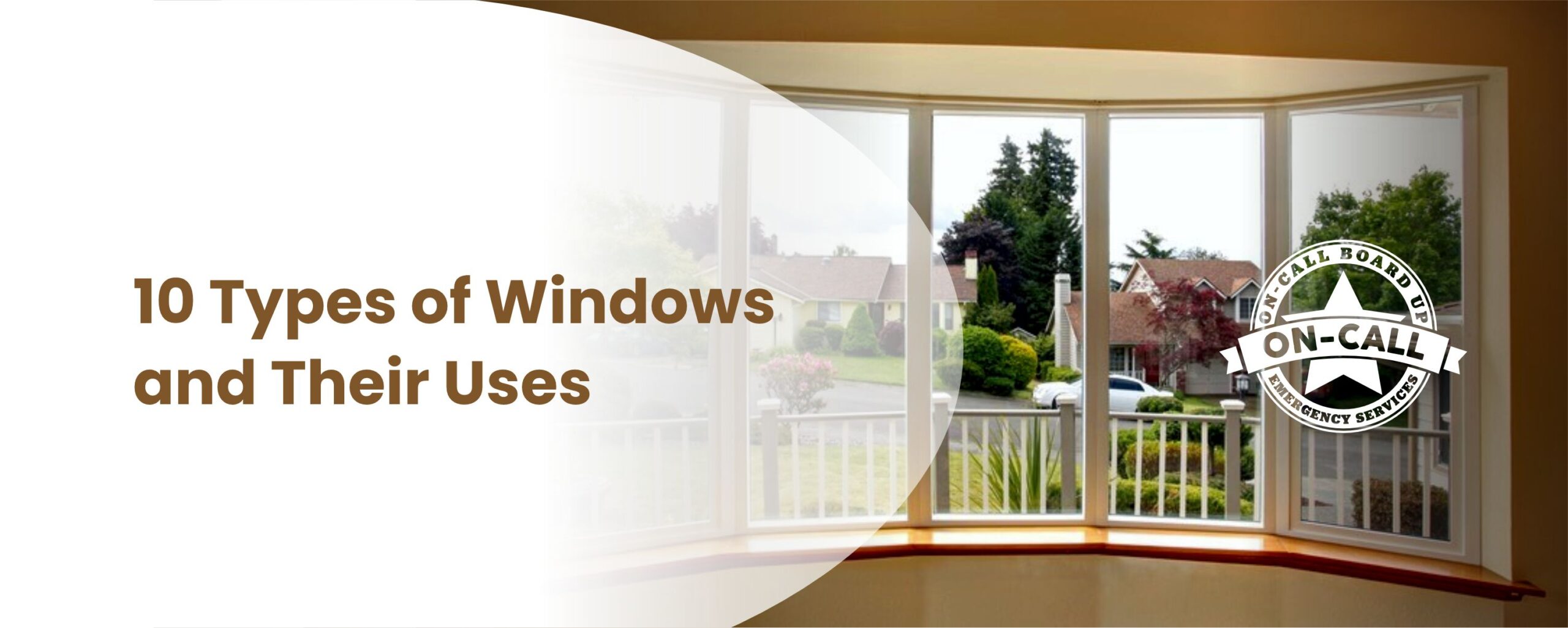While you can choose your home’s windows based on aesthetic appeal, you should also consider their functionality. Did you know that some windows are better placed in your living room because they let natural light in? On the flip side, you should use certain types of windows for your bathroom because they help the space feel less stuffy.
Windows come in many shapes and types, from awning windows to single-hung ones. This can be very confusing for the average homeowner who has no experience dealing with windows. This is why we have compiled a list of ten popular styles of windows and explained their uses. If you’d like to make your window shopping easier, our guide is for you!
Here are ten types of windows and how best to utilize them:
- Single-Hung Windows
- Double-Hung Windows
- Sliding Windows
- Fixed Windows
- Awning Windows
- Casement Windows
- Bay and Bow Windows
- Skylight Windows
- Glass Block Windows
- Transom Windows
- Single-Hung Windows
Single-hung windows have two sashes, one on the upper side and one on the lower, but only the lower sash is moveable. The upper sash is fixed in place. These windows are often used in rooms that don’t require much ventilation. This is because the design of one moveable sash allows less air into the home.
Single-hung windows are a little less expensive than double-hung ones. They have fewer moving parts, which means there is a lesser risk of accidents or breakage. These windows are also more straightforward to install. You should consider single-hung windows for the last floor of a building because then you can clean them easily.
- Double-Hung Windows
Double-hung windows also have two sashes; however, unlike single-hung windows, both sashes are moveable. They are more popular than single-hung windows, especially for traditional-styled houses. The sashes may either slide or pivot and this makes them easier to clean.
You should use double-hung windows in areas like your home office and bedroom because they let in more air. However, they create a safety hazard if you have little ones because both sashes open up. This increases the risk of a child falling out if the window is left open and unattended.
- Sliding Windows
Sliding windows open from side to side on a horizontal track rather than opening outward. They are simple to operate and clean and quite popular in modern homes because of their aesthetic appeal.
Sliding windows let in a decent amount of ventilation which makes them great for many parts of the home. For example, your kitchen could use a sliding window for the extra airflow and sunlight for plants. They are also easy and affordable to install, but dust and dirt can get trapped in the horizontal track, which can be difficult to clean.
- Fixed Windows
Fixed windows, also known as picture windows, don’t move. They have a single piece of glass in a frame and help provide an obstructed view. They are more affordable than other types of windows, so they are great if you want to save some money. Fixed windows are also easy to maintain because they don’t have moving parts, but they can be difficult to clean.
While fixed windows don’t give you any airflow, they let in maximum natural light. Their simplistic design has a huge aesthetic appeal, making them perfect for places like your stairway and living room. If you prioritize your home’s energy efficiency, you should get fixed windows. They don’t have gaps that air and heat escape from, so they are great in rooms that don’t need airflow.
- Awning Windows
Awning windows have locks on their bottoms and open outwards. When they are fully open, they look like an awning, which is why they have that name. Awning windows are perfect for you if you live in a rainy state. You can leave them open while it rains, and the water just slides right off the top rather than making its way into your home.
You should avoid awning windows if you live on a lower floor because they stick out when open. Additionally, people can bump into them if you leave them open. Their parts often wear out easily because of the constant movement. Nevertheless, they are quite secure and let in fresh air, which means they are perfect for your basement and kitchen.
- Casement Windows
Casement windows work like doors because of their handles and the fact that they swing outwards, either left or right. They usually have a crank that gives you the freedom to control the level of airflow coming in. Casement windows also offer a water and air-tight seal, making them very energy efficient. They are great for bedrooms and kitchens.
When buying casement windows, remember that their crank mechanism can wear out very quickly. If you’re not up for replacing them every few years, opt for different windows. Also, a strong wind can break them off if you leave them wide open.
- Bay and Bow Windows
Both bay and bow windows have multiple glass panels that protrude from the side of your house. The only difference between them is that bay windows are square, while bow windows have more of a curve. Bay and bow windows usually have one fixed glass in the center, with the other glasses moveable.
Bay and bow windows can be a beautiful centerpiece in your living room. The multiple glasses allow for better airflow, more natural light, and a great view. However, they are quite expensive to purchase and maintain because of the multiple glass panels. Furthermore, it may be difficult to install them if they weren’t built with the home.
- Skylight Windows
Skylight windows, also known as roof windows, are installed on your roof. You can make them fixed like picture windows or operable. They are often placed on sloping roofs. Skylight windows are a great choice if you want to leave your walls bare. They also let in a ton of light from the sky.
You should put a lot of thought into skylight windows before purchasing them. They can be quite expensive to install and carry the risk of sun damage and leaks. Therefore, have a professional examine your roof and rooms to determine the best placement.
- Glass Block Windows
Glass block windows are typically fixed, which means that they don’t open. They are made up of thick semi-opaque glass blocks and, as such, do not let in a lot of light. Glass block windows are best in bathrooms and basements because they let in some light and are not see-through.
Additionally, just like glass block windows don’t let in much light, they don’t let in much heat. This makes them great in the summer. However, they also block airflow. This means that you should have alternative ways of letting in some air to avoid high humidity and mold.
- Transom Windows
Transom windows are rectangular or semicircular and installed right on top of a door or close to the ceiling. They are more popular in older homes and can be decorative or operable. They add natural light to your home while protecting your privacy because they are above an average person’s eye line.
Confirm that your ceilings are tall enough to accommodate a transom window without the proportions looking out of place. Additionally, you should consider these windows in rooms that need little airflow, especially if your windows will be decorative.
What are the Most Commonly Used Types of Windows?
Double-hung and single-hung windows are the most common because they are affordable and flexible. Unlike other types of windows, such as glass block windows, which are only useful in certain places in the home, single-hung and double-hung windows can be placed anywhere.
Conclusion
Picking a window for your home requires thoughtfulness and consideration. Are you prioritizing natural light or airflow? Does your home have high humidity levels? Can your roof handle a skylight window? How often can you clean and maintain your windows? These are questions you should answer before deciding on different types of windows.
Windows are crucial for protecting your home and keeping your energy bills low. This is why it is dangerous to leave a broken window alone. Emergency board up services can help temporarily close the window space until you install a new one. Contact On-Call Board Up today for swift and efficient services.




